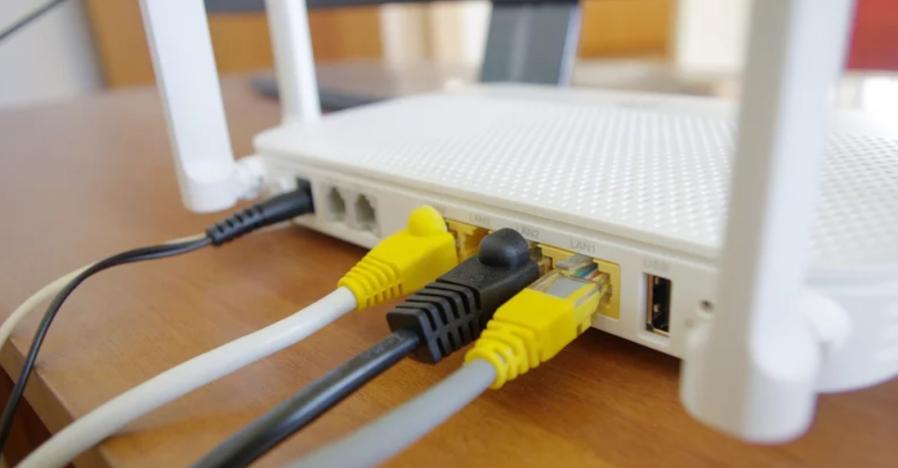Do you have an old router lying around, collecting dust? Instead of tossing it away, consider what to do with old router devices to enhance your home network setup while minimizing electronic waste. Whether your goal is to boost Wi-Fi coverage, create a separate guest network, or expand wired connectivity, old routers can be put to good use. This guide will walk you through several effective methods for reusing your old router, including setting it up as a Wi-Fi extender, guest network, or network switch. With step-by-step instructions, you’ll be able to optimize your equipment, improving your home connectivity and saving money on additional devices. Understanding what to do with old router hardware can also contribute to a more sustainable approach to technology. Let’s explore how you can make the most out of your unused router.

Why Repurpose Your Old Router?
Reusing your old router offers multiple advantages, both practical and financial. For one, it helps reduce electronic waste, contributing to a greener environment by extending the lifecycle of your device. From a practical standpoint, old routers can be used to enhance your existing network setup in various ways. For example, configuring your old router as a Wi-Fi extender can help eliminate dead zones and improve coverage throughout your home. If you regularly host visitors, setting up a guest network with your old router provides internet access without compromising the security of your main network. Additionally, turning your router into a network switch allows you to expand wired connectivity for devices such as gaming consoles, smart TVs, or desktop computers. Each of these applications provides valuable benefits, maximizing the usefulness of your old router while improving your overall network efficiency.
Steps to Transform Your Old Router into a Wi-Fi Extender
Checking Compatibility and Requirements
Before repurposing your old router as a Wi-Fi extender, you need to confirm its compatibility with your current router. Start by checking your router’s manual or searching online for specifications. Most routers manufactured in the last decade have extender or repeater mode options, but it’s essential to verify. Gather the necessary items, including Ethernet cables, power supplies, and user manuals. Ensure your old router’s firmware is updated to the latest version, as outdated firmware may lack the functionality required for extending a network. Visit the manufacturer’s website to download the latest firmware and installation guides. Proper preparation prevents unnecessary troubleshooting and ensures a smoother setup process, allowing your old router to effectively boost your Wi-Fi coverage.
Setting Up Your Old Router as an Extender
To turn your old router into a Wi-Fi extender, start by connecting it to your computer via an Ethernet cable. Open a web browser and enter the router’s IP address to access the admin interface. Login with the admin credentials—usually found on the device or in the user manual. Navigate to the settings and enable the “Extender Mode” or “Repeater Mode” option. If the router does not have this feature, consider installing third-party firmware like DD-WRT or OpenWRT, which adds additional capabilities. Configure the extended network’s SSID and password to match your main network, ensuring seamless roaming for connected devices. After saving the settings, disconnect the Ethernet cable and place your old router in the desired location.
Optimizing Placement for Maximum Coverage
Proper placement of your old router is crucial for optimal performance. Position the device midway between your primary router and the area where you experience weak connectivity. Avoid placing the router near large metal objects, thick walls, or electronic devices that may interfere with signal strength. Ideally, elevate the router by mounting it on a wall or placing it on a high shelf. Test signal strength using your smartphone or computer’s Wi-Fi diagnostic tools to confirm adequate coverage. Reposition the router as needed until you achieve the desired signal strength. Making these adjustments ensures your Wi-Fi extender effectively improves coverage, eliminating dead zones and providing reliable connectivity throughout your home.
Troubleshooting Connectivity Issues
Despite careful setup, connectivity issues may arise when using your old router as an extender. Start by ensuring both routers operate on the same Wi-Fi channel to avoid interference. Additionally, check for IP address conflicts by assigning a static IP to the extender within the range of your primary router. Reboot both routers and reset the extender settings if necessary. Verify that the firmware is updated on both devices, as outdated software can cause compatibility problems. Regularly monitor the network’s performance to ensure optimal connectivity. If problems persist, consult the router’s user manual or manufacturer’s support page for further guidance.
How to Set Up a Guest Wi-Fi Network Using Your Old Router
Why Create a Guest Network?
Creating a guest network using your old router is an excellent way to enhance network security and convenience. By providing visitors with internet access without granting them access to your primary network, you can safeguard your personal files and devices from unauthorized access. Additionally, guest networks offer the flexibility to monitor and control bandwidth usage, ensuring your main network remains unaffected by heavy traffic. Implementing a guest network also allows you to establish dedicated parental controls, prioritize bandwidth, and restrict network access during specific hours. Overall, a guest network is a practical solution for improving security and optimizing your network’s efficiency.
Configuring Your Old Router as a Guest Network
To set up a guest network, start by connecting your old router to your primary router via an Ethernet cable. Access the old router’s admin interface by entering its IP address into your web browser. Navigate to the wireless settings and enable the “Guest Network” option. Choose a unique SSID and password that are distinct from your primary network’s credentials. Configure the network to use WPA3 or WPA2 security protocols for maximum protection. If your router supports bandwidth management, allocate a specific amount of bandwidth to the guest network to prevent it from interfering with your primary network. Save your settings and test the network’s functionality before allowing guests to connect.
Enhancing Security for Your Guest Network
Securing your guest network is essential to prevent unauthorized access and potential security breaches. Enable AP isolation, which prevents devices connected to the guest network from communicating with each other. Regularly update your router’s firmware to patch any security vulnerabilities and improve performance. Consider enabling network access logging to monitor connected devices and detect any unusual activity. Additionally, establish a schedule for guest network availability, limiting access to specific hours or days if necessary. Taking these precautions ensures your guest network remains secure and functions efficiently without compromising your main network’s safety.
Testing and Managing Your Guest Network
After setting up your guest network, testing and managing it properly is essential to ensure smooth functionality and security. First, connect a device such as a smartphone, tablet, or laptop to the guest network to confirm it provides internet access. Use tools like Speedtest.net to check the network’s speed and compare it to your main network’s performance. Also, verify that the guest network is effectively isolated from your primary network by attempting to access shared files or devices; successful isolation ensures enhanced security. Access your router’s admin interface to schedule the guest network’s availability, limiting usage to specific hours if needed. Regularly monitor connected devices for any unusual activity or unauthorized access. Routinely reviewing the guest network’s performance helps maintain a reliable and secure connection for visitors while protecting your primary network.
Creating a Network Switch from an Old Router
What Is a Network Switch?
A network switch is a device designed to facilitate communication between multiple wired devices within a local area network (LAN). Unlike a basic hub, which broadcasts data to all connected devices, a switch intelligently directs data packets to their intended recipients. This selective transmission process improves network efficiency, reduces congestion, and enhances speed. Network switches are commonly used to connect devices such as PCs, printers, smart TVs, gaming consoles, and other Ethernet-enabled devices. They offer dedicated bandwidth to each connected device, minimizing latency and providing a more stable connection. Repurposing an old router as a network switch is a practical and cost-effective solution for expanding wired connectivity within your home or office. It also helps reduce electronic waste by giving new life to outdated equipment.

Setting Up Your Old Router as a Network Switch
Turning your old router into a network switch is a straightforward process that enhances your wired network’s capabilities. Begin by connecting your old router to your primary router using an Ethernet cable. Plug one end into a LAN port on the main router and the other end into a LAN port on the old router. Access the old router’s admin interface by entering its IP address in a web browser. Once inside, disable the DHCP server to avoid IP conflicts with the primary router. Change the old router’s IP address to fall within the range of your main router’s subnet, save the changes, and reboot the device. Now, connect your wired devices to the old router’s LAN ports. Your old router will function as a switch, improving connectivity and network performance.
Benefits of Using an Old Router as a Switch
Repurposing your old router as a network switch offers several advantages that can enhance your network’s overall performance. By expanding the number of available LAN ports, you can connect multiple wired devices such as desktop computers, printers, gaming consoles, and smart TVs. Wired connections are generally faster and more stable than wireless ones, providing uninterrupted performance for activities requiring high bandwidth, such as online gaming or HD streaming. Additionally, using an old router as a switch is a cost-effective solution that maximizes the potential of existing hardware. Instead of purchasing a separate switch, you can make use of a device you already own. This approach not only saves money but also contributes to reducing electronic waste, promoting a more environmentally friendly approach to technology usage.
Conclusion
Repurposing your old router can significantly enhance your home network without requiring costly new equipment. Understanding what to do with old router devices allows you to maximize their usefulness rather than letting them go to waste. By converting it into a Wi-Fi extender, you can effectively eliminate dead zones and expand your network’s coverage. Setting up a dedicated guest network provides better security for visitors while protecting your primary network from potential breaches. Alternatively, turning your old router into a network switch offers additional wired connectivity options for various devices. Each method offers valuable benefits, allowing you to make the most of your existing hardware. Embracing these practical applications not only saves money but also reduces electronic waste, contributing to a more sustainable approach to technology use.
FAQ
Can all old routers be used as Wi-Fi extenders?
Not all old routers can function as Wi-Fi extenders. Compatibility depends on the router’s firmware and capabilities. Check the manual or manufacturer’s website to determine if your router supports extender mode.
Is it safe to use an old router for network expansion?
Yes, it is generally safe if the firmware is up to date and the router’s security settings are properly configured. Ensure WPA2/WPA3 security protocols are active to protect your extended network.
What to do if your old router is outdated or damaged?
If the router is significantly outdated or damaged, repurposing it may not be effective. Consider recycling it according to local electronic waste guidelines or donating it if it still functions but is not suitable for your needs.
